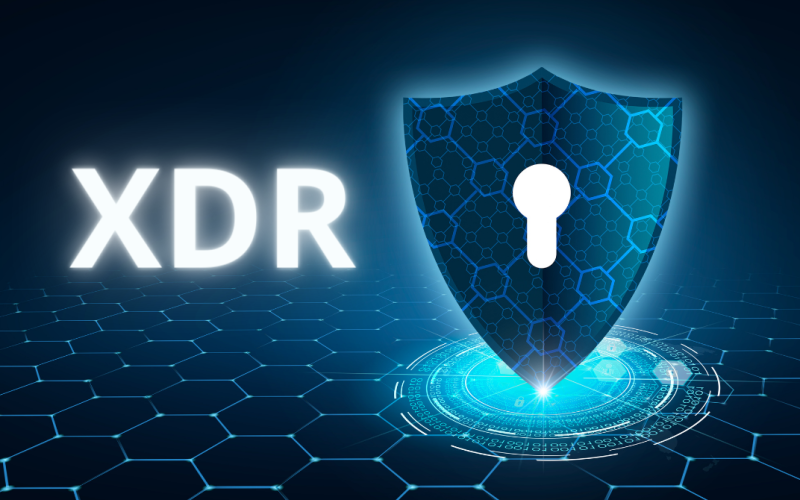Introduction
As enterprises increasingly adopt Virtual Desktop Infrastructures (VDI) to support remote workforces, reduce endpoint hardware dependencies, and centralize management, they must also adapt their security strategies to keep pace. Traditional endpoint security solutions often fall short in VDI environments due to their dynamic nature, shared resources, and ephemeral sessions. This is where Extended Detection and Response (XDR) comes into play—offering deep visibility, behavioral analysis, and coordinated threat response across virtual desktop ecosystems.
In this article, we explore the security challenges of VDI and how XDR can address them to create a resilient, scalable, and secure virtual desktop environment.
What is VDI?
VDI stands for Virtual Desktop Infrastructure. It allows users to access a desktop operating system (like Windows) from a remote server. Instead of having all data and applications saved on local computers, they are stored on a central server. This setup is managed by IT teams and used often by remote workers, contractors, or companies with high data security needs.
VDI makes it easy to manage updates, enforce security policies, and reduce hardware costs. However, since many users connect from different locations and devices, it also creates new paths for cyber attackers to get into the system.
What is XDR?
XDR, or Extended Detection and Response, is a security tool that gathers data from many parts of your network—like endpoints, servers, emails, and cloud services—and then analyzes it to detect threats. It uses machine learning and behavior analysis to catch unusual activity. Once a threat is found, XDR responds either automatically or by sending alerts to your security team.
XDR is more advanced than older tools like traditional antivirus or basic monitoring. It looks at the big picture, which is important in a VDI setup where users and devices are spread out.
Why VDI Needs Strong Security
VDI systems offer many benefits, but they also come with challenges:
- Multiple users share the same resources.
- Remote access can expose the system to unsafe networks.
- A single weak point can affect the entire infrastructure.
- Hackers may try to steal user credentials to get in.
Traditional security tools often struggle in these environments. They may not provide enough visibility, especially when users access desktops from various locations. Without full awareness of what’s happening, it’s easy to miss a hidden threat.
Understanding the Security Challenges of VDI
VDI setups centralize desktop environments on virtual machines hosted in data centers or the cloud. While this approach enhances manageability and scalability, it also introduces a unique set of security challenges:
1. Dynamic and Ephemeral Endpoints
VDI sessions are frequently spun up and torn down. This makes it difficult for traditional security tools to maintain consistent coverage and forensic visibility across all sessions.
2. Limited Visibility Across Layers
VDI environments often span multiple layers—hypervisors, virtual machines, storage, network traffic, and authentication mechanisms. Security blind spots can easily form if tools operate in silos.
3. Shared Infrastructure Risks
Since VDI environments often host multiple users on shared resources, lateral movement by threat actors can be stealthier and harder to detect.
4. BYOD and Remote Access
Remote users may access VDIs from unmanaged or compromised devices, increasing the risk of credential theft, malware injection, or session hijacking.
5. Insider Threats
Insiders working within VDI environments may exploit administrative privileges or misconfigured policies to exfiltrate data or disrupt operations.
The XDR Advantage in VDI Environments
Extended Detection and Response (XDR) is designed to deliver integrated threat detection, investigation, and response across multiple security layers—endpoint, network, cloud, email, and identity. For VDI, XDR brings several key benefits:
1. Unified Visibility Across the VDI Stack
XDR consolidates telemetry from multiple layers—virtual machines, host operating systems, authentication logs, and network traffic—into a centralized platform. This unified view is critical in VDI where traditional endpoint tools may lack persistent agents or may not survive between sessions.
Benefit: Reduces blind spots and provides end-to-end insight into user and system activity.
2. Behavioral Analytics for User and Entity Monitoring
XDR platforms use machine learning and behavioral analysis to detect deviations from normal behavior, such as unusual login times, suspicious access patterns, or abnormal data movement within the VDI environment.
Benefit: Helps detect insider threats, compromised accounts, and session hijacking in real time.
3. Agentless and Lightweight Endpoint Monitoring
Many XDR solutions support agentless or cloud-native monitoring, which is ideal for VDI where persistent endpoint agents may not function efficiently. Alternatively, lightweight agents optimized for virtual environments can be deployed to minimize resource overhead.
Benefit: Maintains endpoint visibility without degrading performance or requiring complex deployments.
4. Cross-Domain Correlation and Automated Threat Hunting
XDR correlates signals from VDI workloads with other data sources—like firewall logs, identity providers, and cloud workloads—to surface advanced threats such as lateral movement, privilege escalation, or command-and-control communication.
Benefit: Enhances threat detection accuracy and reduces alert fatigue.
5. Automated and Orchestrated Response
When a threat is detected within a VDI session, XDR can automatically trigger response actions such as:
- Isolating the virtual machine
- Blocking user accounts
- Initiating password resets
- Revoking session tokens
- Rolling back malicious changes
Benefit: Rapidly contains threats before they spread laterally or cause broader disruption.
6. Forensics and Root Cause Analysis
XDR continuously collects and stores telemetry data, enabling analysts to perform retrospective investigations—even for ephemeral VDI sessions that no longer exist.
Benefit: Supports detailed post-incident analysis and compliance auditing.
Real-World Use Cases: XDR in Action for VDI
Case 1: Detecting Credential Theft in a VDI Farm
A user logs in to a VDI session from an unusual IP address and accesses sensitive files at odd hours. XDR flags this as anomalous based on UEBA (User and Entity Behavior Analytics) baselines. It then correlates this behavior with a known C2 IP in the threat intelligence database, triggering auto-isolation of the virtual desktop and alerting the SOC.
Case 2: Mitigating Lateral Movement
XDR detects a PowerShell script execution in a VDI session that attempts to scan internal resources. The platform correlates the action with previous events—such as a suspicious login and credential dump attempt—and blocks the session, preventing further lateral movement.
Case 3: Post-Incident Investigation of a Malware Outbreak
An organization experiences a malware outbreak across several VDI instances. Although the sessions are no longer active, XDR’s historical telemetry enables analysts to trace the infection path, identify patient zero, and understand how the threat propagated through virtual desktops.
Best Practices for Deploying XDR in VDI Environments
- Integrate with Identity Providers (e.g., Active Directory, Azure AD): Monitor logins, authentication events, and user roles for early indicators of compromise.
- Tune Policies for VDI Behavior: Tailor detection rules to reflect normal usage patterns specific to your virtual environment.
- Leverage Cloud-Based XDR for Scalability: Choose cloud-native XDR platforms that can scale elastically with your VDI workloads.
- Enable Network and Endpoint Sensors: Combine endpoint signals with east-west traffic monitoring for layered defense.
- Test Response Workflows: Regularly simulate attacks to validate that XDR-triggered responses work correctly in your VDI setup.
The Future of VDI Security with XDR
As VDI adoption continues to grow—driven by hybrid work models, cost-efficiency, and centralized IT control—security needs will evolve in parallel. XDR is poised to become a cornerstone of virtual desktop security by:
- Bridging visibility gaps
- Automating threat response
- Detecting sophisticated attacks across shared infrastructure
By unifying detection and response across domains, XDR empowers security teams to protect VDI environments with greater precision, speed, and confidence.
Final Thoughts
Securing VDI environments demands more than traditional endpoint protection. With its ability to correlate signals across distributed systems, analyze behavior in real time, and orchestrate rapid responses, XDR stands out as a critical enabler for defending virtual desktops against today’s advanced threats.
For organizations relying on VDI to power remote productivity, now is the time to elevate their defenses with an XDR-powered approach.












